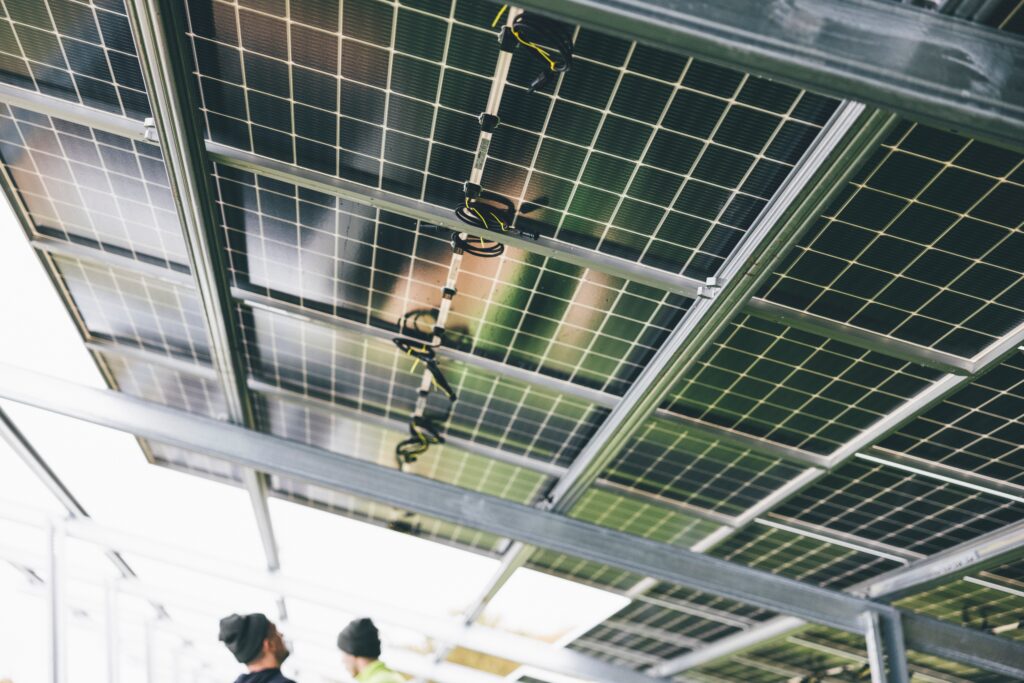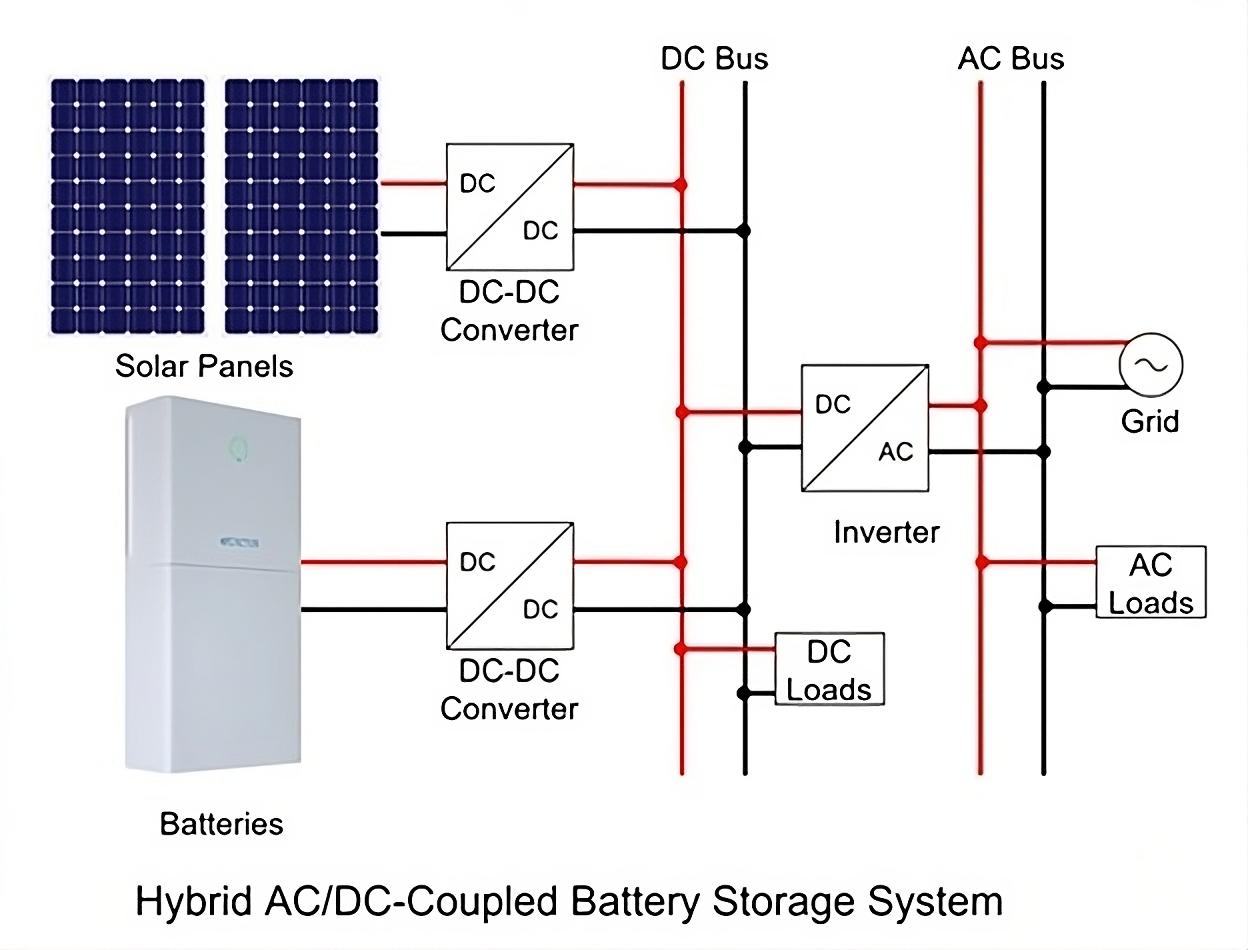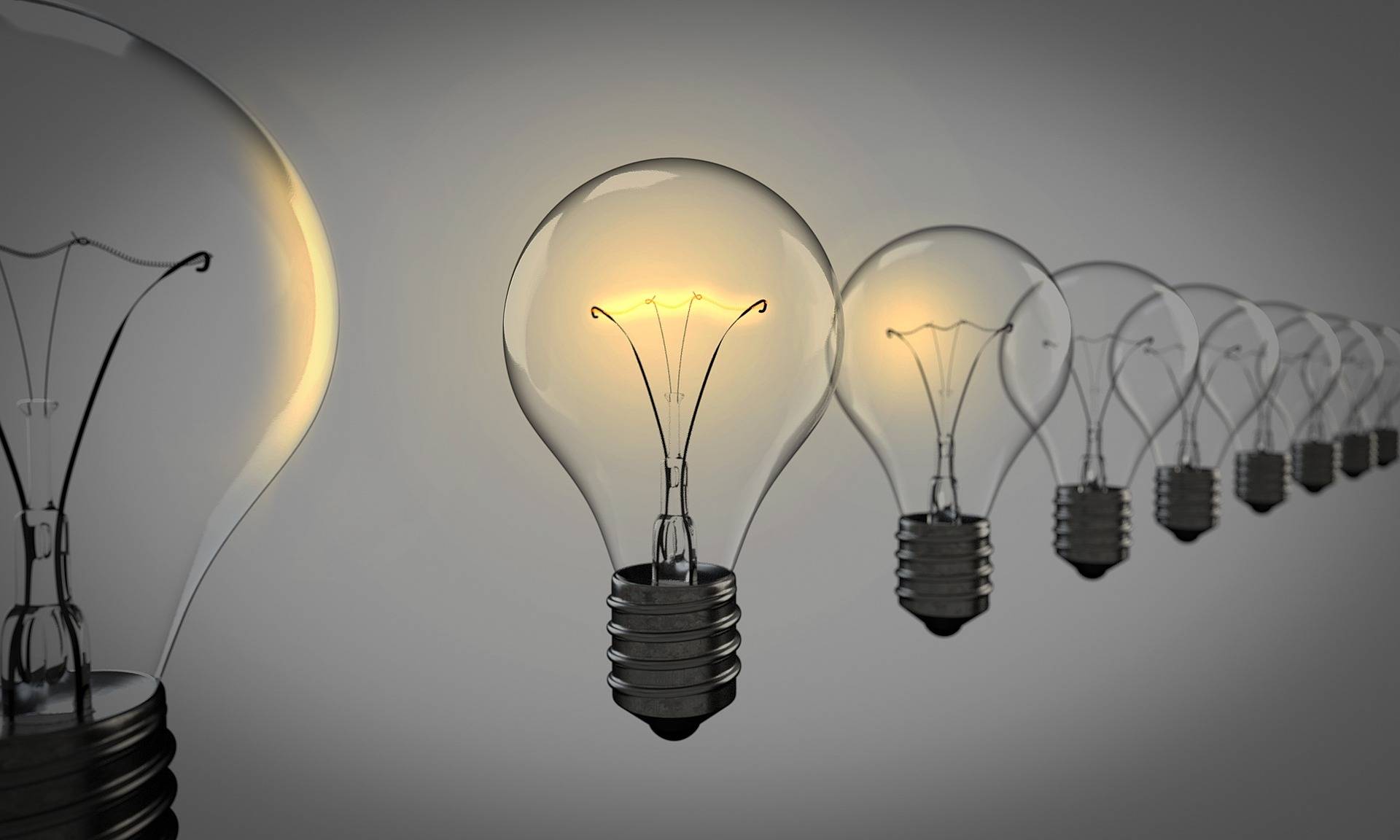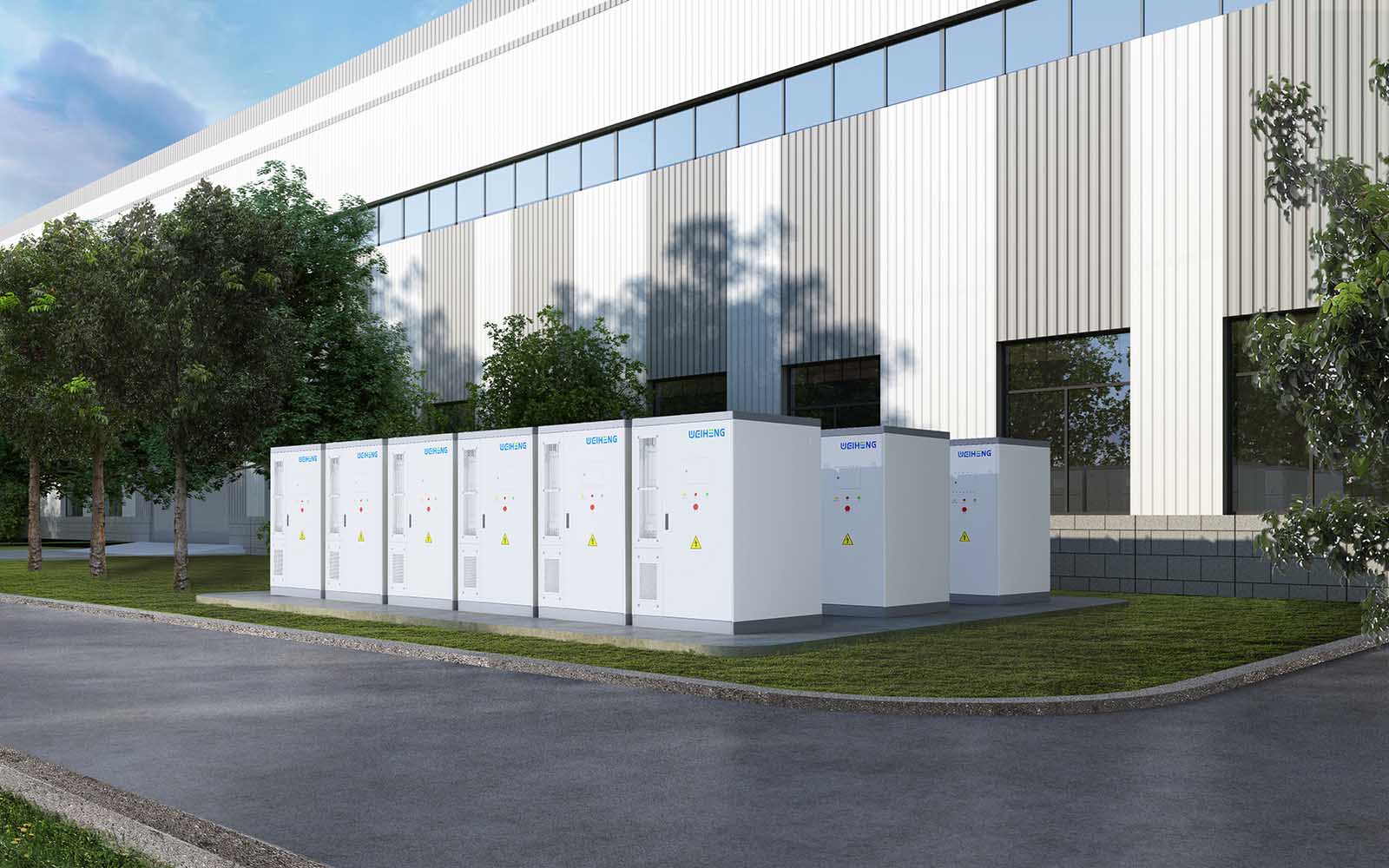
The main difference between a DC and AC-coupled battery storage system is where the battery is connected in relation to the inverter. In a DC-coupled system, the battery is connected directly to the solar panels before the inverter. In an AC-coupled system, the battery is connected to the system after the inverter.
In this article, we will deeply examine how both DC and AC-coupled storage systems work, their architectures, benefits, drawbacks, and use cases. We will also explore hybrid-coupled systems that offer a blend of features from both AC and DC configurations. By the end, you’ll know exactly how each system operates and which fits your needs the best.
AC-coupled Battery Storage Systems
In an AC-coupled Battery Energy Storage System (BESS), the solar system and batteries have their own separate inverter mechanics (housed inside one case). This dual-inverter setup is a crucial architectural element differentiating it from DC-coupled systems.
The solar panels generate Direct Current (DC), converted to Alternating Current (AC) via a solar inverter. This AC power flows into an AC bus, a centralised electrical junction that distributes the AC power to the grid, the battery, or directly to any active loads.
A second inverter, often referred to as a multi-mode inverter, manages the battery and serves two primary purposes. First, it converts AC power back to DC for battery charging. Second, it converts the DC energy stored in the battery to AC during discharge.
The AC bus connects both inverters and is the main way power flows through the system. It also allows for flexibility in how the system works.

AC-coupled energy storage systems provide several key benefits:
- Ease of installation: Installing AC-coupled systems is easier and faster than setting up DC-coupled ones. That makes them cheaper and great for updating current solar setups without changing the entire setup.
- Flexibility: Since the solar panels and batteries are on the AC side, their locations are not limited. Installers have flexibility on placement.
- Redundancy: Having separate solar and battery inverters means the systems are independent. If one inverter fails, the other system still works.
- Grid charging: AC-coupled batteries can charge from solar panels and the electrical grid, providing flexibility.
- Full inverter output: Since the solar and battery inverters are independent, they can discharge simultaneously at full-rated power.
- Modularity: In AC-coupled storage systems, battery capacity can be easily increased over time by adding more units.
While AC-coupled systems provide several advantages, they also have some drawbacks. Some of these are discussed below:
- Lower efficiency: The multiple AC-DC conversions mean AC-coupled systems have more energy losses. For instance, if each conversion step has an efficiency of 97%, the cumulative efficiency drops to around 91% after three steps.
- Higher costs: The need for separate solar PV and battery inverters increases the overall system cost.
- Backup Limitations: AC batteries are primarily designed for grid-connected homes. They may be unable to provide sufficient backup energy, especially during peak loads.
So, while AC coupling offers retrofit flexibility, the compromise is marginally lower efficiency and higher costs in most cases when compared to equivalent DC-coupled systems, which we discuss next.
DC-coupled Battery Storage Systems
In a DC-coupled BESS, both the solar PV array and the battery storage system are connected to the DC bus of a shared central inverter1. This direct connection offers a streamlined path for the flow of electricity from the solar panels to the battery storage.

In DC systems, the DC power from the solar panels charges the batteries directly without first changing to AC, which boosts efficiency. When you need power, the stored DC energy is converted to 230V AC by the same inverter and sent to your home’s electrical system.
The single inverter design of DC-coupled systems provides many advantages:
- Higher efficiency: Energy loss is minimised with only one conversion process from DC to AC. That makes DC-coupled systems stand out with an efficiency edge, often exceeding 95% under optimal conditions.
- Lower costs: Since only one inverter is used, the overall system cost is lower than AC-coupled systems.
- Solar system oversizing: This system design can handle solar panels generating more power than the inverter’s rating. Any excess energy can be used in charging the battery or other applications, maximising energy usage.
- Direct battery charging: DC-coupled systems can use solar panels to charge batteries directly. That keeps the system operational during power outages.
While DC coupling provides efficiency and cost benefits, it does have some downsides, including:
- Installation complexity: While using a single multi-mode inverter simplifies the system’s operation and improves efficiency, the initial setup of DC-coupled systems is more complicated.
- Flexibility concerns: The system requires the inverter to be positioned close to the battery. Integrating with pre-existing PV systems might need significant modifications.
- Single point of failure: Using a single inverter means the system has no redundancy. If the inverter fails, the entire system is compromised, including solar generation and battery storage.
Also, DC-coupled systems usually work at lower voltages, between 48V to 400V. That differs from AC systems that can handle up to 600V, making them better for big installations.
DC-coupled systems are best when your main goal is to charge the batteries, not use solar power immediately. Direct DC-to-DC charging avoids extra steps and saves energy.
Now that we have discussed both AC and DC-coupled systems, it’s clear that both have pros and cons. But what if you want the best of both worlds?
Hybrid AC/DC-coupled systems achieve this by combining the strengths of both. Let us talk about them next.
Hybrid AC/DC-coupled Battery Storage Systems
Hybrid coupled systems combine attributes of both AC and DC-coupled architectures. That provides more flexibility in integrating solar panels, battery storage, and generators.
A specialised dual-mode or hybrid inverter is connected to an AC and a DC bus2 in a hybrid setup. The DC bus is usually directly linked to the solar panels and batteries, while the AC bus interfaces with AC loads and the electrical grid.

The hybrid inverter manages the electricity flow in the entire system, seamlessly switching between AC and DC power flows based on the demands of the connected loads and the status of the electrical grid.
Here’s how it works:
DC power from your solar panels can either go straight to the battery through a DC/DC converter or routed to the AC bus for immediate use or to send back to the grid. Avoiding unnecessary power conversions means less energy gets wasted.
When it’s time to use the battery’s stored power or send power to the AC loads or grid, the inverter changes the DC power into AC and moves it to the AC bus.
Hybrid coupled storage systems provide many benefits, including:
- High efficiency: Hybrid systems are as efficient as DC-coupled systems since they cut out extra power conversions needed in AC systems. So, you can easily achieve efficiency up to 98% in DC/DC conversions compared to around 91% in multiple AC/DC conversions.
- Load flexibility: The dual-bus setup allows for granular control over load management. You can efficiently direct DC power to DC loads and AC power to AC loads, optimising the energy distribution.
- Cost-effectiveness: While the hybrid inverter may be more expensive upfront, the overall system cost can be offset by eliminating additional conversion equipment and charge controllers.
- On-grid and off-grid Modes: The system can seamlessly transition between grid-interactive and off-grid modes, making it versatile for applications ranging from urban settings to remote locations.
Two potential drawbacks of hybrid systems include:
- Control complexity: Managing the simultaneous operation of AC and DC components requires complex control algorithms.
- High initial cost: A hybrid inverter and advanced control systems can be higher than traditional single-mode inverters.
Next, let’s discuss a practical example of a hybrid AC/DC-coupled battery storage system – the Agave hybrid residential energy storage system from eCactus.
Agave Hybrid Residential Energy Storage System
The Agave hybrid residential energy storage system is a hybrid, all-in-one battery system that gives control of your home’s power through the ECOS smart app. This all-in-one system contains a bi-directional inverter, an integrated lithium iron phosphate (LiFePO4) battery, and dual MPPT solar chargers.

The system can be installed with new or existing rooftop solar panels. The solar panels connect directly to the DC input of the hybrid inverter with dual Maximum Power Point Trackers (MPPTs). That allows the solar energy to charge the batteries during the daytime directly.
The system also provides an integrated AC port to connect it to the grid. That lets the system draw energy from the grid to charge the batteries.
The Agave hybrid battery system offers multiple modes of operation to optimise your power usage:
- Self-power mode: The battery storage system uses solar energy to meet your home’s energy demands. Any excess power charges the battery for later use.
- Backup mode: During power outages, the system switches to backup mode in less than ten milliseconds. That guarantees an uninterrupted power supply for your essential appliances.
- Load-shifting mode: An intelligent load-shifting mode lets the system charge its battery during off-peak hours when electricity is cheaper. During peak hours, the system discharges the stored power.
Other key features of the Agave hybrid residential energy storage system include:
- High efficiency: With a maximum efficiency of 97.6%, this system makes optimum use of solar power.
- Safety measures: Equipped with more than ten safety features, including over/under voltage protection, DC isolation protection, hydrogen gas detection and residual current detection.
- Low noise: Operates at less than 25 dB, offering a quiet and peaceful environment.
- Smart technology: Supports Virtual Power Plant (VPP) and Artificial Intelligence of Things (AIOT) for an integrated smart home experience.
Final Thoughts
AC, DC, and hybrid systems each have their pros and cons. AC systems are great for updating existing setups and are flexible, but they are less efficient and can cost more. DC systems are efficient and can be cheaper but are harder to set up and less flexible.
Hybrid systems give you the best of both AC and DC coupling. They are efficient and let you manage your power in many ways. But they can be complicated to control and cost more at the start.
If you want a system that does everything, look at the Agave hybrid system from eCactus.
With its multiple modes of operation, high efficiency, and smart home features, it’s designed to meet a wide range of energy needs.
FAQs
1. How Can Generators be Integrated Into DC and AC-Coupled Systems?
Generators can provide backup power for AC and DC-coupled systems in case of grid failure. However, the integration method differs for each architecture.
For an AC-coupled system, a generator can be connected to the battery inverter to maintain power flow when the grid goes down. AC power from the generator will flow through the battery inverter to the home, allowing continued usage.
In a DC-coupled system, because the solar panels and battery are connected to the DC bus, the generator must be connected directly to the home’s distribution panel. That allows power from the generator to flow to the household loads independently. The solar panels and batteries remain offline.
For a hybrid coupled system, a generator can be conveniently connected to the AC bus of the inverter. That allows seamless grid-tied and backup operation without affecting the high-efficiency DC-coupled components. The generator will feed the distribution panel during outages while keeping the inverter and DC coupling online.
So, for reliable backup power, generators integrated via AC-coupled or hybrid architectures offer a seamless and robust solution.
2. Is AC or DC-Coupling Better for Off-Grid Systems?
Off-grid solar systems require the ability to operate independently from the electrical grid. This requirement makes DC and hybrid coupled systems usually better suited than pure AC-coupled architecture.
With AC coupling, the solar and battery inverters are typically designed only for grid-tied functionality. They may shut down when the grid goes down. Without grid power, AC-coupled systems have no operating reference.
On the other hand, DC-coupled and hybrid systems are more easily designed for off-grid operation. The shared inverter can continue converting DC from batteries into AC power for the home, even without the grid.
Besides, the direct DC connection between solar panels and batteries enables continuous charging in an off-grid DC system when the sun shines. With AC coupling, solar panels may shut down with the loss of the grid before they can charge batteries.
So, for off-grid solar homes, cabins, RVs, and other applications requiring independence from the grid, DC and hybrid coupling generally provide the best architecture.
3. Is AC or DC-Coupling More Common in High-End Systems?
For high-power and high-capacity energy storage systems, such as at the commercial, industrial, and utility scales, AC coupling tends to be more commonly deployed3.
Some reasons AC coupling dominates in larger systems include:
- The ability to locate batteries away from solar and inverter equipment
- Simplified integration of multiple supplemental battery banks
- Easier scaling of system components over time
- Independent operation of solar array from batteries increase resilience
- Availability of high-capacity single-phase battery inverters
The flexibility benefits at larger scales outweigh the higher cost and complexity of coordinating multiple large AC inverters.
References
1 Vega-Garita V, Ramirez-Elizondo L, Mouli GRC, Bauer P. Review of residential PV-storage architectures. 2016 IEEE Int. Energy Conf., IEEE; 2016
2 Thompson C. AC vs. DC coupling in utility-scale solar plus storage projects. Whitepaper, Eaton, 2016.
3 Moutawakkil K, Elster S. RE hybrid systems. Refocus 2006







